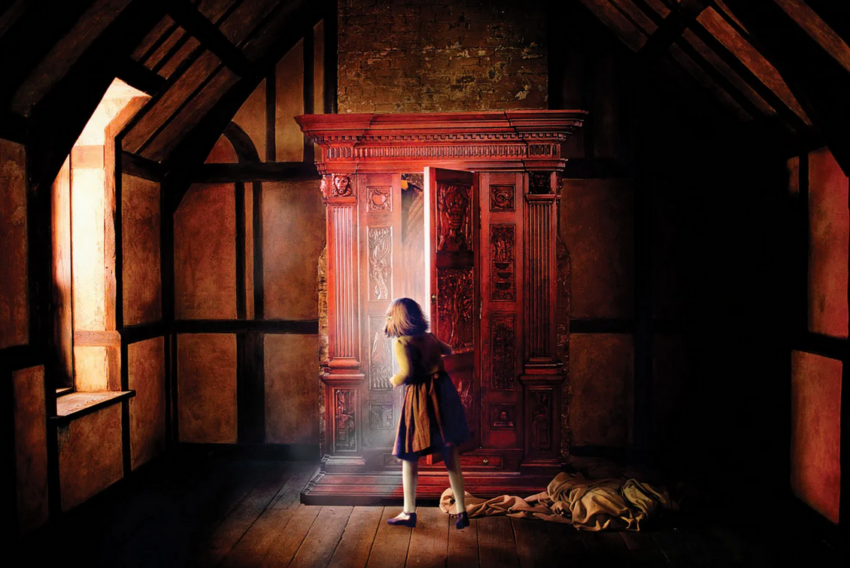At this point, enough fantasy characters have traveled through magical portals to reach far-away worlds. That trope — a magic circle with teleportation properties — a has become cliched and predictable, with many readers asking for more creative devices to transport protagonists between two worlds.
But coming up with a brand-new method of transportation can at times be more difficult than crafting an entire new world itself. Those, at least, can be based on real cultures, places, and people, with creativity that’s been sparked by other fantasy writings and cultivated by long and intentional thought. And after crafting an extensive magic system, vibrant cultures, and rich lore, it can be difficult to sit down and come up with something brand-new to transport your readers — and most ideas eventually start to sound like different iterations of the same, tired old portal our readers have seen so many times before.
Because it is so often overlooked, the transportation device you allow your characters to stumble across can often be one of the most challenging parts of your work to think through. But it’s no less important than many of the other aspects of your worldbuilding. The right method of transportation can set the tone for your entire book. It’s your readers’ very first introduction to your brand-new world, after all, and first impressions count.
So today, we’re going to be looking at the technique of one of greatest fantasy authors of all time and one of the founders of the high-fantasy genre itself, C. S. Lewis, all through his book The Lion, the Witch, and the Wardrobe.
The Lion, the Witch, and the Wardrobe
Lucy, Edmund, Susan, and Peter Pevensie are four children who were evacuated from London during the Battle of Britain in World War Two, when Germany’s Blitzkrieg sent planes over the city to bomb English civilians every night. In 1941, they were sent to live in a large, empty house in the English countryside occupied by an elderly, hermit-like professor.
But one day, as the children explore the extensive house, Lucy finds something incredible in one of the abandoned rooms. A large, seemingly forgotten wardrobe hidden away in a dust-covered closet catches her attention, at first only because it seems so grand and mysterious. But as she explores the depths of the massive wardrobe, she finds it far deeper and larger on the inside than it appears on the outside. There, she finds a frozen woodland and comes to the realization that the wardrobe is actually the doorway to another world. Within that world, she and her three siblings face an epic battle to help restore good to a land called Narnia, frozen by a 100-year’s winter. Together, they will usher in the Golden Age of Narnia by ending the winter and stopping the White Witch who cursed Narnia a century ago.
But all of it started when a little girl opened a wardrobe.
That wardrobe has become iconic not only of C. S. Lewis’s The Lion, the Witch, and the Wardrobe but also of the entire Chronicles of Narnia series and arguably Lewis’s image as an author. Despite his vast publication across fiction and nonfiction over entirely different genres and audiences, there is something undeniably unique about his wardrobe. It served not only as a gateway to bring his characters from our world to another, but also became an icon of the magical world he created and eventually a symbol for the entire fantasy genre.
So how can we create a gateway to our world that is just as powerful? How can we transport our readers in a way that has never been done before and in a way that our readers will never forget?
C. S. Lewis leveraged three specific tools to make his method of transportation stand out, and today we’re going to look at each one and how they impacted his story.
1. Historical Significance
Perhaps the biggest part of what makes the wardrobe so interesting is its historical significance, both to the characters and to the readers who know its past. This wardrobe is intrinsically tied to Narnia, down to the very fibers of its wood which, as a tree, was bent by wind from Narnia even in our world.
As we learn in The Magician’s Nephew, the old professor the children go to live with is more than he appears. As a boy he traveled to Narnia and brought back an apple from a magical tree with healing properties. He gave it to his mother, who was deathly ill at the time, and miraculously, she recovered. He planted the seeds leftover from the apple, and they grew into a tree, a native of Narnia itself. He guarded it carefully until a storm blew it over and he was forced to chop it down. He had it made into a wardrobe, which he hid away in the back of his home until Lucy found it, years later.
This history is so critical to understanding where the wardrobe came from and why it mattered. C. S. Lewis could have given us a random entry to Narnia, but he didn’t. Instead, he made the wardrobe’s tie to Narnia impactful by letting his readers see how the two were connected. And it’s this connection that gave the wardrobe so much significance.
2. The Importance of Aesthetics
As I mentioned above, whatever method of transportation you use to bring your readers from our world to another will stick with them, because it’s their first introduction to your new world. So don’t pass up the opportunity of letting your readers get their first, powerful taste of the flavor of your world. We’ve talked before on the blog about how powerful first impressions are, and that goes for more than just characters. Your world has a personality and character just as unique as your protagonist, so let it shine through by allowing your characters to discover it through a characteristic transportation device.
C. S. Lewis emphasizes over and over again how home-like Narnia is. It was a fantasy world with magic and fauns and talking animals, and yet to the children it felt strangely familiar, as though they had always belonged there and Narnia had always been their true home from the beginning. The wardrobe does an excellent job of communicating this because of how common it is. There are very few homes without one. Its impressive size and elegant carvings don’t diminish the fact that it’s an everyday piece of furniture. And more than that, it belongs in a home, where someone is most comfortable and used to the things that are around them.
That’s how the children felt about Narnia and C. S. Lewis showed this was by having them find it through an entirely unconventional, generally home-like item of furniture. There was nothing unusual about looking inside a wardrobe, and the aesthetic of familiarity extended to the entire world.
3. Doing Something New
I’ve already hinted at this above, but if you miss the other two points, don’t miss this one. Don’t confine yourself to another portal. Write something creative. If you have an idea and wonder if it’s legitimate because no other fantasy author has tried anything like it, go for it. I promise it will be worth it. Ultimately, it was the one-of-a-kind uniqueness of Lewis’s wardrobe that made it so iconic. No other writer will dare to have their readers travel through a wardrobe because it will always be second-rate after Lewis’s. It was his creativity that gave each of his readers an unforgettable image of Lucy traveling to a new world through a wardrobe. While history gives significance and aesthetics improve your world, don’t forget that creativity is what makes your transportation device memorable to begin with.
Don’t be afraid to be the first fantasy author to try something new. Remember the spark of creativity that started this whole fantasy journey, and let it grow until it shines through even the way you bring your readers from their world to yours. It will be that spark, in the end, that makes it all unforgettable.



What has been your favorite method of transportation in fantasy? How do you plan to transport your characters (and your readers!) in your current WIP? Let us know in the comments below!


Hi! My name is Mara, and I’m a Christian artist, violinist, and blogger. I remember the day that I decided that I would learn something new about what makes a good story from every book I picked up — whether it was good, bad, or a mixture of both. I use this blog as a way of sharing some of the tips and tricks I’ve learned, and highlight which books, cartoons, and movies have taught me the most about writing an awesome story.


The DreamWorks “Where’s Waldo” series uses a suitcase to transport/teleport.
(I don’t know what it looks like, since I was in the front seat of the car at the time and the tablet was behind me. We aren’t going to continue the series, but it was an interesting concept.)
The Pokemon Hoopa uses literal rings to make portals. Hoopa Confined cannot travel through it’s own portals, while Hoopa Unbound can.
My characters use marble-like artifacts to make portals to the Netherverse. It’s a bit cliché… but I don’t really care. 😅
Oh wow, some of those are really cool!!
Yeah, sometimes you have to go with what makes sense for your world. And hey, if it fits the genre and style you want to get across, go for it!
I love this article! I also thought it was interesting that C. S. Lewis didn’t use the Wardrobe as a portal in any of the other books. He also used rings (in The Magician’s Nephew), and a picture (in The Voyage of the Dawn treader), while in Prince Caspian, the children get called back by Susan’s enchanted horn.
Yes! I almost mentioned that in the article. Each book has a slightly different aesthetic, and so he made different transportation methods to fit each book. The Magician’s Nephew definitely felt more other-worldly and mystic, so rings fit well. The Voyage of the Dawntreader is pretty self-explanatory, and Prince Caspian rings of old memories and ancient stories that the Pevensies were once a part of, similar to the enchanted horn!
I’m so happy you mentioned this!